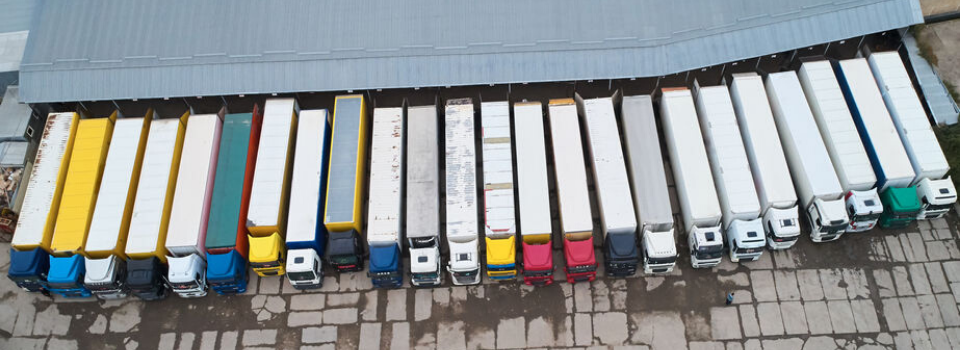In our capacity as a supply chain-consulting partner for small to medium sized enterprises, we’re used to helping clients with a wide range of challenges, but the majority of them fall under seven broad areas of focus.
However, we prefer to think of these as areas of opportunity, rather than challenge, because of the significant benefits attainable when solutions are identified and implemented.
Perhaps you will recognise one or more of these areas as presenting challenges for your supply chain organisation. If so, we’d like to share our thoughts as to why you should take a glass-half-full approach to them. Instead of thinking, “How can we overcome the problems here?” consider them as untapped opportunities—and then work on the steps needed to tap them.
Area of Opportunity #1: Procurement
Like any smaller company, procurement resources, skills, and systems in your organisation might all be stretched, making it hard to contain costs without creating service issues that affect your customers. At the same time, getting procurement costs down has to be a priority for your business, given that those costs can represent as much as 60% of your overall supply chain budget.
Where to Look for Opportunities
If you want to find opportunities to improve procurement costs and performance, try to bring some resources to bear on supplier relationships and management, because this may well be where the obstacles to your own performance lie.
In particular, you should look at steps to improve the following aspects of procurement and purchasing:
- The approach you take to supplier management;
- The amount of money being spent with each of your suppliers;
- Identification of suppliers that underperform (based on predefined performance criteria);
- Measurement of supplier performance.
However, it’s also worth investigating your internal processes, not only within your procurement and purchasing departments, but also in your warehouses. Efficient goods receiving processes are especially important, since they influence your ability to make purchased inventory available for sale.
How to Unearth Procurement Opportunities
First steps to find opportunities in procurement might include:
- Conducting a procurement spend analysis;
- Performing a supplier performance analysis;
- Developing a suite of KPIs to monitor supplier performance;
- Carrying out a review of warehouse goods-receiving processes.
If you have already performed some of these steps, but are still finding procurement to be a challenge in your organisation, it might help to have an external agency perform an impartial audit or review of your processes. Opportunities may be more readily apparent to someone looking in from the outside.
Area of Opportunity #2: Inventory Management
It’s not uncommon for SMEs to experience inventory management gremlins. Some issues may not even be noticed, despite their detrimental impact on service and working capital. The good news is that many inventory management problems are easily rectified, once you’re aware of their existence.
Spotting IM problems is actually not that difficult—if you’re able to recognise certain telltale signs.
In order to determine whether these symptoms are indeed caused by inventory management weaknesses, you could try any (or preferably all) of the five investigative steps listed below:
1) Perform a complete ABC analysis of inventory in your supply chain.
2) Review your inventory management processes.
3) Evaluate sales and demand forecast accuracy.
4) Review supplier performance.
5) Implement or improve your inventory management key performance indicators.
IM Improvement: Opportunities and Benefits
If you’re able to undertake some of these steps, you should be able to identify at least one or two improvement opportunities. By taking advantage of them, you can expect to receive some of the following important benefits of effective inventory management:
- A reduction in stock shortages and hence, better availability for your customers;
- A faster turnaround of inventory;
- Your inventory will suck up less of your working capital;
- Your customer retention will improve;
- You will have more spare warehouse capacity;
- You will save time and money in your warehouse operations, as staff and processes become more efficient.
These benefits are very real, and not that hard to attain, as long as you can meet your inventory management challenge head on and spot the issues that need to be addressed.
Area of Opportunity #3: Warehousing
Warehousing challenges for SMEs typically follow one of two general themes. They are:
1) Warehouse layout and process efficiency.
2) Warehouse capacity concerns.
To some extent, issues in one of these areas can spill over to impact the other. If you begin to struggle with warehouse capacity as your business grows, there is a possibility that your processes will begin to run into bottlenecks and your carefully planned warehouse layout will begin to break down.
On the other hand, if your layout and/or processes are less than optimal, capacity can become a problem. Either way, the problems in your warehouse can lead to excessive costs and poor customer service. Furthermore, a wrong decision in addressing capacity concerns can prove very costly indeed.
For example, we have seen many companies make the wrong move, either by relocating to larger premises unnecessarily or by soldiering on for too long in a warehouse space that’s just no longer adequate.
How to Get the Best from Your Warehousing Operation
A thorough audit of your warehouse facilities and processes can often highlight opportunities to improve. Questions to ask (and answer) include…
- Do we have the right mix of storage and mechanical handling equipment in our warehouses?
- Are we using the right KPIs to measure warehousing performance?
- Are we using the most appropriate picking processes (i.e. order picking, wave picking, manual, automated)?
- Are there elements of our warehouse processes that can be simplified, perhaps by reducing the number of process steps?
You might also investigate whether you could gain more by outsourcing your warehousing operations, rather than continuing to keep them in-house. A well-matched 3PL may be able to provide you with a number of benefits, such as scalable capacity and efficiencies aided by superior technology and expertise.
Area of Opportunity #4: Transport and Freight Management
This can be a particularly tricky area of management for SMEs, since unlike larger companies, the cost of outbound transportation can amount to as much as 10% of overall supply chain expenditure.
This is typically because small to medium sized enterprises struggle to achieve economies of scale in transportation, but it also has a lot to do with how well your transport team understands and manages freight contractors and their rate structures.
However, cost is not the only transport-management challenge for SMEs, especially if the operation is run internally.
Without sophisticated load and route optimisation software, it’s not easy to create dependable plans and customer-delivery schedules. When customers are waiting for their orders to arrive though, any delays can only be a source of frustration and dissatisfaction, and that can potentially mean declining sales for your company.
Some Common SME Transport Management Mistakes
If your company is finding it challenging to control freight costs and/or maintain a reliable service to your customers, you could be making any of the following mistakes:
- Using the wrong types of transport service;
- Using too many or too few freight contractors
- Under or over-utilising your in-house transport fleet
- Using the wrong metrics to measure fleet performance
- Employing inadequate processes or planning tools
- Operating with an inappropriate mix of vehicles (this can be true of an in-house or outsourced transport operation
A complete review of your transport operation might help you to spot if any of these issues are at play. In any case, it makes to perform a regular transport review, as your needs can change subtly over time.
Area of Opportunity #5: Logistics Outsourcing
Establishing and maintaining an outsourcing relationship with a 3PL is rarely without some challenges, even for the largest supply chain operators. For the SME, especially when outsourcing for the first time, the whole endeavour can seem fraught with difficulty.
Indeed, an outsourcing decision is not one to take lightly or without help from people experienced in the process and its potential pitfalls. But what if your company is already engaged in an outsourcing arrangement and things are not going so well?
Obviously you can try to fix the relationship with your 3PL partner and in fact, this should always be the first course of action, as either of the other two “remedies” may be costly and complex to execute.
One of those remedies is to seek a new 3PL to work with, and the other is to take your logistics operation back in-house. Unfortunately, if you reach the point where you a fractious 3PL relationship must be addressed, your company and its customers are already paying the price, and will continue to do so until you either fix the relationship, or get through the tribulations of changing providers or reestablishing an in-house solution.
Sometimes, Relationship Building Needs a Little Help
Whether you are just making the decision to outsource, or are struggling with an existing 3PL partnership, opportunities are aplenty if you approach the issue with optimism. Of course, you already know this if you are planning to outsource, but it may not seem so apparent when you’re wondering how to recover from a failing partnership.
In the first instance, it’s all about planning and knowledge, which a supply chain consulting company like Dawson Consulting can help you with. In the second, you have the opportunity to turn things around and build a partnership that will benefit your business and that of your 3PL partner. Happily, that’s something we specialise in too.
Area of Opportunity #6: Customer Service
We’ve already discussed how some of the SME supply chain challenges can affect customer service, but there can be many other reasons for customers to feel dissatisfied.
We’ve found that in many cases, it proves simply to be because the business doesn’t truly understand its customers’ needs, even though the management team thinks it does.
Are you experiencing any of the following in your business?
- An increase in customer complaints.
- Customer service costs that appear inordinately high.
- A lot of rework in your warehouse or transport operation.
- A high frequency of emergency/expedited customer deliveries.
If so, your customer service offering is probably not being managed as well as it could be. Do you have a documented customer service policy applied to your supply chain operation? If not, you have a perfect opportunity to set a clear baseline by which to measure service performance.
Are your customer-service targets realistic? If a review should reveal that they’re not, well… there’s another opportunity to reset and start afresh, but remember to let your customers know about your new policy and standards.
In fact, it’s best to start by speaking with your customers to get an idea of their current expectations, especially if you currently apply a blanket policy. It’s not unknown (or even uncommon) for supplying companies to be over-servicing some customers, while falling short of what others expect.
Area of Opportunity #7: Digital Transformation
Keeping an accurate track of products as they move through the supply chain is essential if you want to identify logjams and address inefficiencies.
Question: Are you still operating your global supply chain via a paper trail of spreadsheets and emails?
If so, you are one of the few SMEs that have yet to implement digital transformation. According to an IDC study of more than 3,200 decision-makers in 11 countries, almost all small and mid-sized businesses have at least some digital transformation resources in place, be it collaboration software, powerful communication software, or cloud computing.
But the study highlights the lack of ability of many companies to deploy these resources in a way that will bring them to the next level of business performance.
That is the challenge, now comes the opportunity…
The study also found that there is a clear connection between digital transformation and revenue growth. It reported that 49.3 percent of respondents believe technology levels the playing field for small businesses against larger corporations.
In other words, technology allows you to mix it up with the big boys, and at the same time to expand your business.
But of course, being a small to medium-sized business, you don’t have the sort of finances that big companies have to invest in game-changing technology such as machine learning, artificial intelligence, the Internet of Things, blockchain, and big data.
The Answer: Cloud-Based Systems, the SME’s Best Technology Friend
Instead of splashing out on expensive systems that require extensive redeployment of staff, why not consider a cloud-based system such as Software as a Service (SaaS)?
Subscribing to SaaS also gives you access to a bank of IT specialists, thereby relieving you of the need to hire your own experts.
SaaS comes with the following additional advantages:
- You rent an app that’s custom-made for your company and which is accessible to all members of your supply chain via the Internet.
- The infrastructure, software, and app data are all housed in the cloud of the service provider, which also manages the software and hardware.
- SaaS offers complex applications, including Enterprise Resource Planning (ERP) and Customer Relations Management (CRM), to smaller organisations at affordable prices.
Implementing a large-scale software package that can track and control all of the complex operations of your supply chain will transform your business, making it more competitive and, crucially, more profitable. And you don’t have to pay a hefty price for it!
Challenges are Just Opportunities in Disguise
Wherever there is a challenge in your supply chain operation, you can choose the way you look at it. At Dawson Consulting, we believe all challenges are just opportunities waiting to be realised.
If you and your management team look at them the same way, it’s much easier to motivate the whole business toward cost and service improvement and hence, increased profitability.
If you need a little help to unlock opportunities in any of the six areas discussed in this article, our team is ready and waiting to help. One of our targeted auditing services could be just what you need to get some focus—and start the improvement ball rolling.
Editor’s Note: This post was originally published in February 2018 under the title “6 Key Areas of Supply Chain Opportunity for SMEs”. It has since been updated and expanded, with the addition of a new section to make the information contained in the post more comprehensive.








suppliesof items